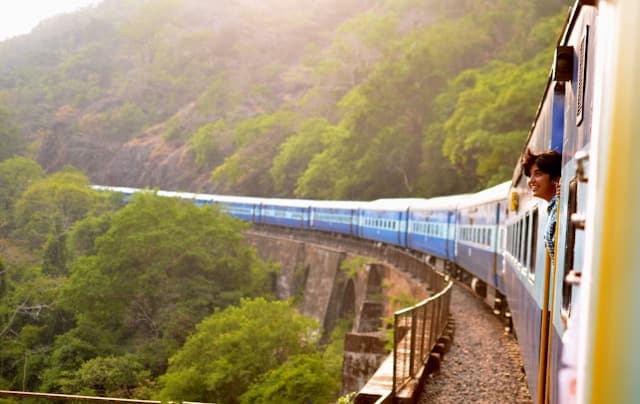Train travel continues to be a popular and scenic way to explore both Australia and overseas destinations. With a mix of high-speed rail, long-distance sleepers, and suburban networks, travelling by train offers comfort, reliability, and a lower-carbon alternative to air or car travel.
For Australians, trains connect major cities and regional centres, offering opportunities to enjoy the country’s natural beauty while avoiding airport crowds. Internationally, iconic rail lines in Europe and Asia give travellers an efficient and immersive experience. This guide covers what to expect from train travel in 2025 and how to plan effectively.
Domestic Rail Travel in Australia
Australia’s domestic rail network links capital cities and regional towns through a mix of interstate and intrastate services. NSW TrainLink, Queensland Rail, and V/Line are among the key providers operating long-distance and regional lines. While not high-speed by global standards, many routes offer spacious seating, scenic views, and onboard dining.
Popular routes include the Brisbane to Sydney journey, which travels through the Northern Rivers and Central Coast regions.
Another major corridor is the Brisbane to Melbourne route, which includes connections through New South Wales and Victoria. While it may take longer than flying, the experience offers a relaxed pace and stops in rural communities. Learn more in Train Travel from Brisbane to Melbourne: What to Expect.
International Train Travel for Australians
Australians travelling abroad often find that train travel is a preferred option in countries with well-developed rail infrastructure. In Europe, high-speed trains connect major cities in hours, while rail passes make multi-country travel more affordable.
One of the most iconic routes is the London to Amsterdam line, which takes just over four hours via the Eurostar. The journey travels through the Channel Tunnel and offers seamless boarding in central city stations. Read more in Train Travel from London to Amsterdam: A Guide for Australians
Train systems in Japan, South Korea, and parts of Southeast Asia also offer efficient, punctual service. Booking platforms like Rail Europe or country-specific services such as JR Pass (Japan) make planning easy for first-time visitors.
Tips for Planning a Comfortable Train Journey
Train travel offers flexibility, but it’s important to prepare for your journey—especially for long-distance or overnight routes. Booking in advance ensures access to the best seats or sleeper cabins. On many services, you can choose between economy and premium classes, with extra legroom, power outlets, and meal services.
Pack essentials such as snacks, water, reading material, and a travel pillow for longer trips. Most modern trains include onboard toilets and Wi-Fi, but services may vary depending on the provider and location. If you’re catching a regional train, arrive early, as smaller stations may not have staff on-site.
Timetables can vary during holidays or maintenance periods, so always check for schedule updates close to your departure date. Travelling midweek or during off-peak hours may also result in cheaper fares and quieter carriages.
What to Bring and Consider Before You Go
Here are practical tips to ensure a smooth train travel experience:
-
Buy tickets online in advance for discounts and seat reservations
-
Bring your own food and drink, especially for regional or long-haul journeys
-
Check luggage limits if travelling with large suitcases or bicycles
-
Use mobile apps from providers to track schedules and delays
-
Carry entertainment such as books, headphones, or downloaded movies
-
Dress in layers as train temperatures can vary throughout the journey
-
Stay alert at stops—some stations have short windows for boarding or exiting
-
Download route maps or print tickets in case of limited mobile coverage
-
Respect quiet carriages by minimising phone and loud conversation use
For more travel tips and destination guides, visit the Remitly Travel Blog.
FAQ: Train Travel for Australians
1. Is train travel in Australia cheaper than flying?
Not always. While trains offer comfort and scenic value, airfare may be cheaper for certain routes. Discounts are available for early bookings.
2. Do I need to book train tickets in advance?
It’s recommended, especially for long-distance or popular routes. Some regional trains allow ticket purchases at stations or onboard.
3. Are there sleeper trains in Australia?
Yes. Services like The Ghan and the Indian Pacific offer overnight travel with sleeper cabins, meals, and onboard lounges.
4. Can I take luggage on the train?
Yes, but check individual carrier policies. Most services allow carry-on and checked luggage, with size and weight restrictions.
5. Are trains accessible for travellers with disabilities?
Major train operators in Australia and abroad provide accessible carriages, ramps, and assistance—though availability may vary by route.
